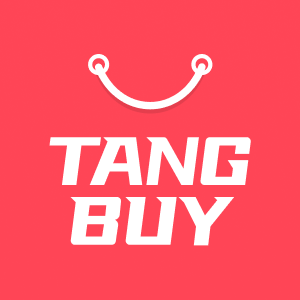How to Work With Dropship Suppliers, Covering Shipping and Communication
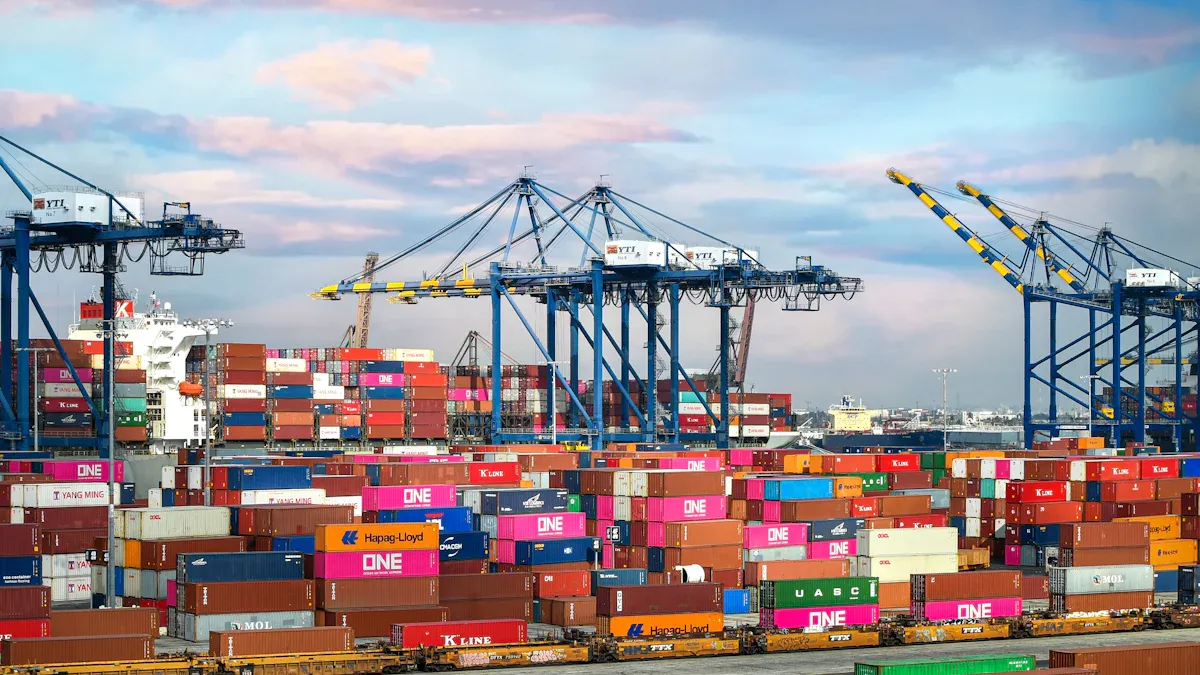
If you want to do well in dropshipping, you must work with the right partners. You should always choose a dropshipping supplier who talks clearly and sends orders on time. Many dropshipping businesses fail because some dropship suppliers are not reliable. They may cause delays or send bad products. Sometimes, it is hard to explain what you need because of language problems. You might also see prices that change or not get help when you need it. To stop these problems, make good relationships with your dropship suppliers. Set clear rules for shipping, and always check details before you dropship a new product. If you want to learn how to dropship the right way, focus on trust, honesty, and talking often.
Key Takeaways
Pick trustworthy dropshipping suppliers by looking at online lists, trade shows, and reviews first.
Talk clearly and politely with suppliers. Ask important questions about orders, shipping, and rules.
Stay in touch with your suppliers often. This helps you find problems early and build trust by being friendly and honest.
Tell customers what to expect for shipping. Give them true delivery times and add extra days in case of delays.
Use automation tools to handle orders and payments well. This helps stop mistakes and saves time.
Check how your suppliers are doing often. Make sure they deliver on time, give good products, and talk clearly.
Work out fair deals with suppliers. Try to get better prices, payment choices, and services for your business.
Get message templates ready. Use them to talk quickly and professionally with suppliers and customers.

How to Find Reliable Dropshipping Suppliers
Finding good dropshipping suppliers is very important. It is the first thing you need to do to make your dropshipping business work. You should use smart ways to look for suppliers. Always watch out for warning signs. Let’s look at some easy ways to find good dropshipping suppliers and not make mistakes.
Research Methods
Online Directories
You can look for dropshipping suppliers in online directories. Websites like Alibaba, SaleHoo, Oberlo, and Modalyst have many suppliers. These sites show you what products they sell and how much they cost. You can also see how they ship items. You can read ratings and reviews from other dropshippers. This helps you know if the supplier is good before you talk to them.
Trade Shows
Trade shows let you meet suppliers in person. You can see the products and ask about shipping. You can also ask how they send orders. Many people find good dropshipping suppliers at trade shows. You can check the product quality right away. You can also start to trust the supplier, which is important for your business.
Tip: Try using social media groups and networking sites. Other dropshippers can tell you about good suppliers. This helps you find great suppliers and stay away from bad ones.
Vetting Suppliers

Ordering Samples
Always order samples before you choose a supplier. This is the best way to check if the products are good. When you get a sample, you can see how the supplier packs and ships it. You can also see how fast it arrives. If the sample is good, the supplier is likely reliable. If not, you can look for another supplier.
Checking Reviews
Read reviews and feedback from other dropshippers. Look for honest comments about shipping and product quality. Good dropshipping suppliers have positive reviews. People will say the delivery is fast and the service is good. If you see fake or too many perfect reviews, be careful. Real reviews help you know if a supplier is good.
Red Flags
Poor Communication
If a supplier takes a long time to reply, be careful. If their answers are not clear, this is a warning sign. Good dropshipping suppliers answer quickly and clearly. Good communication means the supplier cares about your business.
Unclear Policies
Be careful if a supplier does not explain their return or shipping rules. Good dropshipping suppliers always tell you their rules. If you cannot find this information, you may have problems later. Good suppliers want you to know how to work with them.
If you want to dropship the right way, always look for these signs. Good dropshipping suppliers make your business better. They help you avoid big mistakes. Focus on good products and reliable suppliers. This will help you build a business you can trust.
Connect a Dropshipping Supplier

When you want to connect a dropshipping supplier, you need to make a good first impression. This step is key if you want to dropship successfully. You must show that you are serious and ready to build a strong business relationship. Let’s break down the best way to contact a supplier and keep your communication clear from the start.
Initial Contact
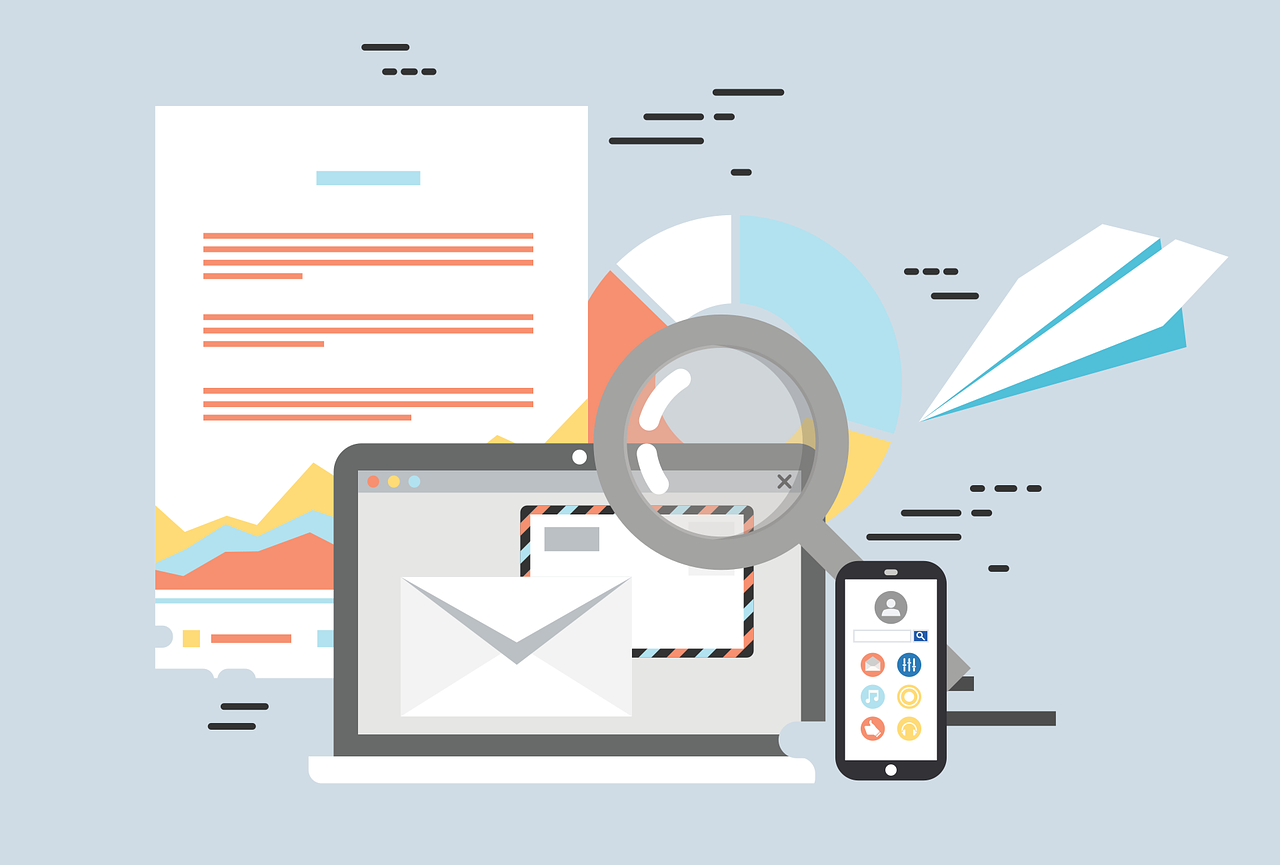
Professional Introduction
The best way to contact a supplier is to start with a friendly, professional message. Here’s a simple process you can follow when you connect a dropshipping supplier:
Research the supplier’s reputation and products.
Write a clear introduction about yourself and your business.
Share what products you want to dropship and your expected order size.
Tell the supplier about your target market.
Say you want a partnership that helps both sides.
Keep your message short, polite, and easy to read.
Add your contact details.
Check your message for mistakes.
Ask the supplier to reply soon.
Thank them for their time.
Follow up if you do not hear back.
Tip: A good first message can set the tone for your whole relationship. Always proofread before you send it.
Key Questions
When you connect a dropshipping supplier, you need to ask the right questions. This helps you avoid problems later. Here’s a table with some key questions and why they matter:
Key Question | Why Ask This? |
|---|---|
Can you handle my order volume? | Makes sure the supplier can grow with your business. |
What are your shipping times? | Helps you set delivery promises for your customers. |
How do you process and dispatch dropship orders? | Shows how fast orders get sent out. |
Will my customers get tracking? | Builds trust with your buyers. |
Do you offer branded packaging? | Good for your shop’s image. |
What is your return policy? | Lets you handle unhappy customers easily. |
Who pays customs fees? | Stops surprise costs for you or your customers. |
Communication Channels

Email is the best way to contact a supplier when you first connect a dropshipping supplier. It gives you a record of your talks and helps you stay organised. Use a clear subject line so the supplier knows what you want. Always reply quickly to keep things moving.
Messaging Apps
Many suppliers use messaging apps like WhatsApp or WeChat. These apps help you connect with suppliers fast and solve problems quickly. After your first email, you can move to messaging apps for daily chats or urgent questions.
Note: Some suppliers also like phone calls, but email and messaging apps are the most common for dropshipping.
Language and Clarity

English Proficiency
When you connect a dropshipping supplier from another country, language can be a challenge. Most suppliers use English, but not all speak it well. Try to keep your words simple and avoid slang. If you have trouble, use translation tools to help both sides understand.
Clear Requirements
The best way to contact a supplier is to be clear about what you need. Tell the supplier your shipping rules, delivery times, and product standards. Write everything down so there is no confusion. Check in often to make sure the supplier follows your rules. If you want to dropship the right way, always keep your communication open and honest.
If you connect a dropshipping supplier with clear instructions, you will avoid mistakes and keep your customers happy.
Communication

Regular Check-Ins
You cannot run a successful dropshipping business without regular check-ins. These check-ins help you stay on top of orders, stock levels, and any problems that might pop up. When you talk to your supplier often, you spot issues before they grow. You also show your supplier that you care about the partnership.
Try to reply to your supplier within 24 hours. Quick replies keep things moving.
Check in with your supplier often. There is no set rule for how many times you should talk, but you should never let more than a day go by without a reply.
Use regular check-ins to ask about stock, shipping times, and any delays.
If you notice a problem, bring it up right away. This helps you fix things before your customers notice.
Tip: Ongoing, proactive communication helps you avoid stock shortages and late deliveries. You can keep your customers happy and build trust with your supplier.
Building Rapport

Building rapport with your supplier makes dropshipping smoother. When you have a good relationship, your supplier will want to help you succeed. You do not need to be best friends, but you should show respect and interest in their business.
Be professional but friendly. Start your chats with a warm greeting.
Ask your supplier how their day is going. A little kindness goes a long way.
Show that you care about their business. Ask questions about their products or new offers.
Stick to your promises. If you agree to pay on a certain day or order a set amount, always follow through.
Give feedback in a helpful way. If something goes wrong, explain what happened and suggest a fix.
Say thank you when your supplier does a good job. A simple thank you note can make a big difference.
When you build rapport, you create trust. Your supplier will see you as a reliable partner. This trust leads to better deals, faster problem-solving, and stronger customer support for your dropshipping shop.
Sharing Insights

Sharing insights with your supplier can take your dropshipping business to the next level. When you share what you learn about your market, your supplier can help you even more.
Tell your supplier which products your customers love. This helps them manage stock and avoid running out.
Share data about what sells best and when. Your supplier can use this to plan ahead and keep popular items ready.
Talk about trends you see in your market. If you notice a new style or product getting popular, let your supplier know.
Use analytics tools to track sales and customer behaviour. Share these findings with your supplier so you both stay ahead of the competition.
Ask your supplier for their own insights. They might know about new products or changes in shipping that could help you.
Note: When you and your supplier share information, you both win. You get better products and faster shipping. Your supplier gets to sell more and improve their service. This teamwork leads to better customer support and happier customers.
A strong partnership with your supplier, built on regular communication, trust, and shared insights, is the secret to long-term dropshipping success. You will find it much easier to solve problems, keep your customers happy, and grow your business.
Addressing Issues

Problems will pop up in dropshipping. You might see late shipments, damaged products, or even mix-ups with orders. When these things happen, you need a clear plan to fix them fast. Good communication with your supplier makes all the difference.
Start by spotting the problem. Is it a quality issue, a delay, or maybe a misunderstanding? Write down what happened. Keep emails, order details, and any photos. This record helps you explain the problem to your supplier.
Next, reach out to your supplier. Use a friendly but direct message. Tell them what went wrong and share your proof. For example, you could say, “The last order arrived late. Here is the tracking info and the delivery date.” This makes it easy for your supplier to see the problem.
Now, suggest a fair solution. You might ask for a refund, a replacement, or a new delivery date. Stay calm and focus on fixing the issue, not blaming anyone. Suppliers respect you more when you look for solutions instead of arguments.
Tip: Always set clear deadlines for a reply. For example, you can say, “Please let me know by Friday how you will fix this.” This keeps things moving and shows you mean business.
If your supplier does not respond or the problem keeps happening, you have options. You can try mediation with a third party, or you can look for a new supplier. Always keep your messages polite and professional. This helps you keep a good relationship, even when things go wrong.
Here’s a simple checklist to help you address issues with your dropshipping supplier:
Contact your supplier with a clear message and evidence.
Suggest a fair solution, like a refund or replacement.
Set a deadline for a response.
Follow up if you do not get an answer.
Use mediation or switch suppliers if needed.
Keep all your records safe for future reference.
You should also keep your customers in the loop. Let them know you are working on the problem. Good customer support can turn an unhappy buyer into a loyal fan. Use real-time updates and clear answers to build trust.
Sometimes, you will need to use tools to help manage disputes. Payment gateways like PayPal or Stripe offer support for handling complaints. You can also use customer support software to track issues and make sure nothing gets missed.
Remember, problems are normal in dropshipping. What matters is how you handle them. Stay calm, act quickly, and always keep your communication open. This way, you protect your business and keep your customers happy.

Shipping
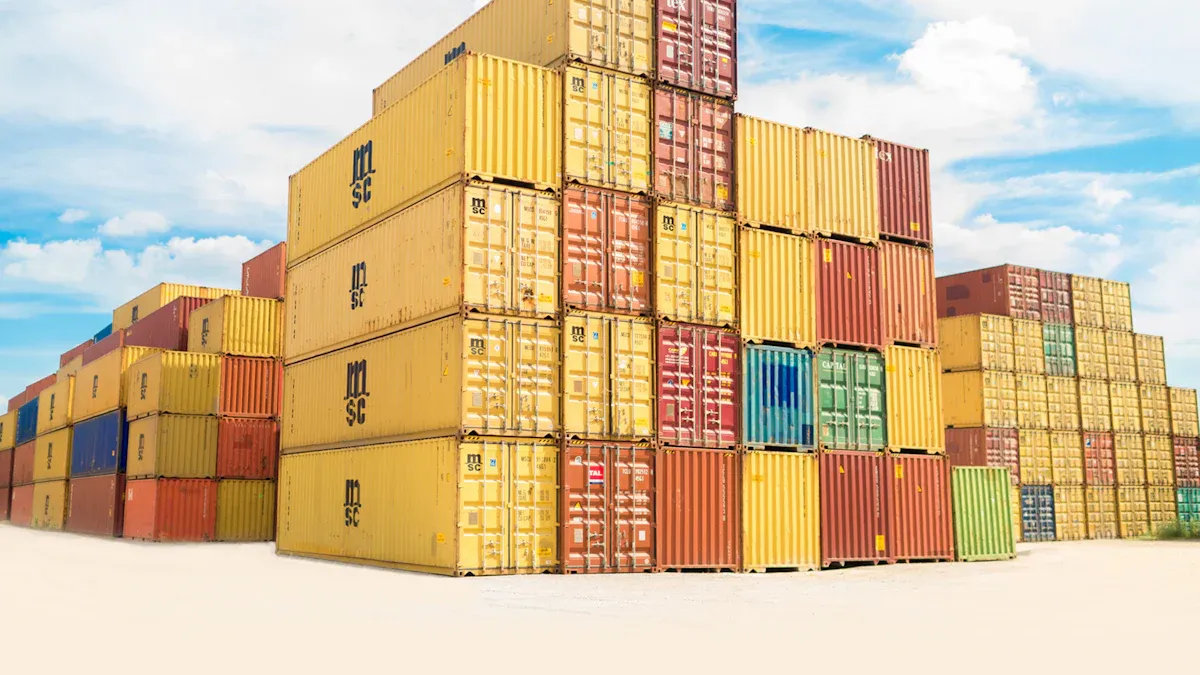
Getting shipping right is very important in dropshipping. If you want happy customers, you must know your shipping choices. You also need to understand lead times and keep everyone updated about orders. Let’s look at each part step by step.
Shipping Options

Domestic vs International
You can pick domestic or international shipping in dropshipping. Domestic shipping means the supplier and customer are in the same country. This is usually faster and costs less. For example, Trendsi, a US supplier, can deliver in 2-5 business days. International shipping takes longer and costs more money. Orders from other countries can take 5-10 business days. Sometimes, it can take up to 16 days for places like Canada or Australia. International shipping costs more because of customs and longer travel.
Tip: Domestic dropshipping suppliers help you save money and get faster delivery. International suppliers give you more product choices, but shipping takes longer.
Carrier Choices
Picking the right carrier changes your shipping and delivery time. Here is a quick look at popular choices for international dropshipping:
Shipping Option | Cost | Delivery Time (China to US) | Tracking Availability | Typical Use Case / Notes |
|---|---|---|---|---|
China Post | Low | 4-8 weeks (avg ~25 days) | Poor or no tracking | Cheapest, slow, often included in product price |
ePacket | Moderate | ~24 days | Always tracked | Used to be popular, now slower and less used |
AliExpress Standard Shipping | Included | ~19 days | Full tracking | Balanced cost and tracking, widely used |
FedEx | High | ~5 days | Full tracking | Fastest, best for high-value items |
EMS | High | 7-10 days | Full tracking | Fast, good for expensive products |
Regional Warehouses | Variable | Faster than direct shipping | Usually tracked | Local stock, faster delivery |
Dropshipping Agent | Variable | Optimised routes | Depends on method | Can improve shipping efficiency |
Some suppliers have special programmes. The actual transportation time is related to many factors such as different logistics providers and distance.
Lead Times
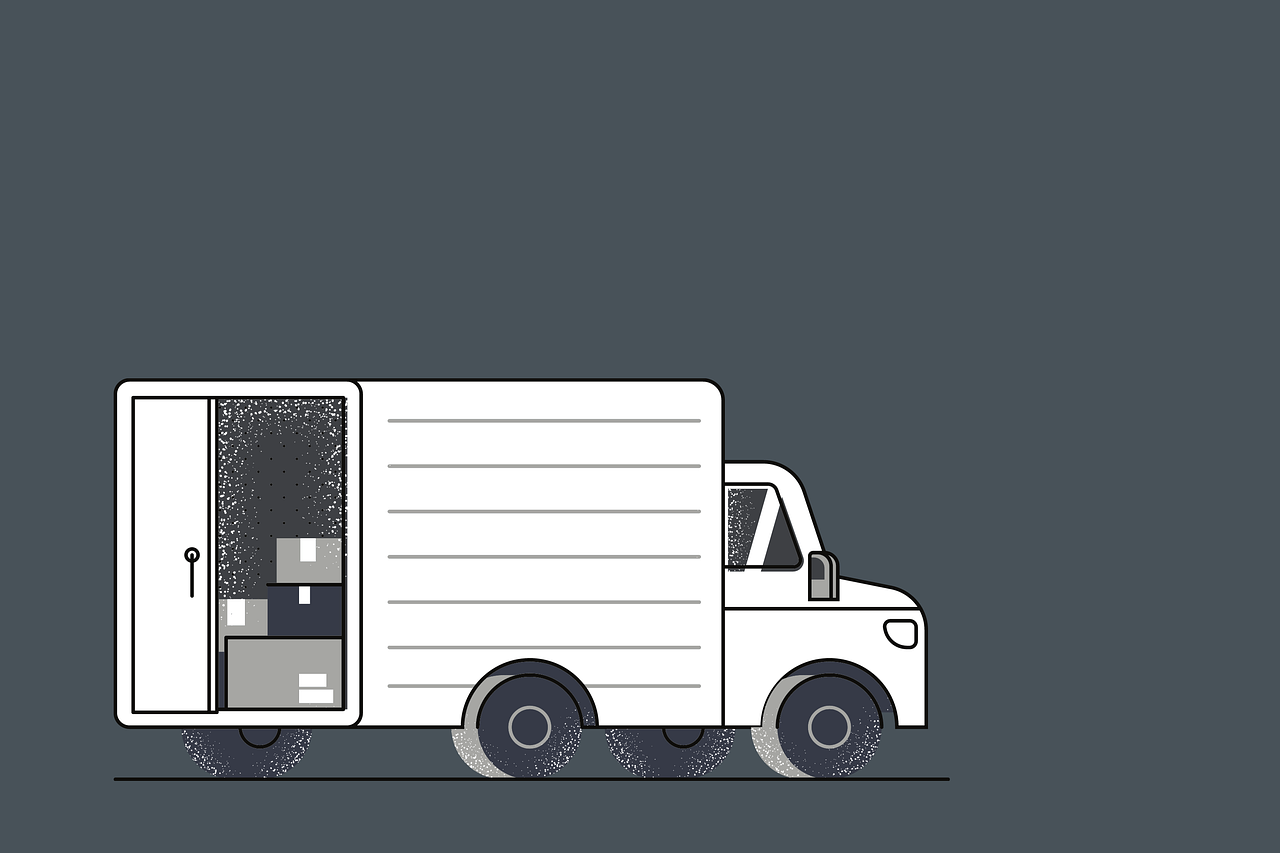
Setting Expectations
You must tell customers when their order will arrive. Orders from China often take 2-4 weeks. US or European suppliers can deliver in just a few days. Always show the estimated delivery time on your website and in order emails.
Here are some good ways to set expectations:
Work with suppliers who ship orders on time.
Offer both standard and faster shipping choices.
Show delivery times clearly at checkout.
Give real-time tracking updates.
Use suppliers close to your customers for faster shipping.
Tell customers about delays quickly and offer refunds or discounts.
Make your return policy easy to find and understand.
Buffer Periods
Always add extra days to your delivery time. This helps if there are delays from customs, holidays, or busy times. For example, if your supplier says 10 days, tell your customer 12-14 days. This way, you avoid disappointment and build trust.
Tracking

Sharing Information
Order tracking is very important in dropshipping. You must keep customers updated at every step. Most dropshipping shops use tools like DSers, AfterShip, or 17TRACK. These tools send updates by email or SMS. You can let customers choose their favourite tracking method, like UPS or 17TRACK.
Keep all tracking info in one place.
Send real-time updates about order status.
Customers feel better when they can see where their order is.
Handling Delays
Shipping delays can happen in dropshipping. Bad weather, customs, holidays, or wrong addresses can slow things down. You can reduce problems by using suppliers with local warehouses and by automating your process. Always tell customers about delays as soon as you can. Offer new delivery dates, refunds, or discounts if needed. Good communication and quick action can turn a problem into a chance to build loyalty.
Plan ahead for busy seasons and world events.
Use address checking tools to avoid mistakes.
Invest in real-time tracking and automation.
Give customers clear support and fast replies.
Remember, you cannot stop every delay, but you can control your response. Fast, honest updates keep your dropshipping business strong.
Orders and Payments

Managing orders and payments is a big part of running a successful dropshipping business. If you want smooth dropshipping fulfillment, you need to understand how orders move from your shop to your supplier and then to your customer. You also need to know how payments work and what extra costs might pop up.
Order Process
Manual vs Automated
You can handle dropshipping orders in two main ways: manually or with automation. Manual order processing means you enter each order by hand. This takes a lot of time and can lead to mistakes, like wrong addresses or missed items. If you get lots of orders, manual work can slow you down and cause problems with order fulfillment.
Automation makes things much easier. Tools like DSers or AutoDS connect your shop to your supplier. When a customer places an order, the system sends the details straight to the supplier. Automation cuts down on errors, speeds up shipping, and helps you manage stock. You can handle more orders without getting overwhelmed. Still, you should check orders now and then to spot fraud or changes from customers.
Tip: Automation saves you time and helps you avoid mistakes, but always keep an eye on your orders for the best results.
Confirming Orders
Here’s how a typical dropshipping order moves from start to finish:
Your customer places an order in your online shop.
Your shop system receives and processes the order.
You (or your automation tool) send the order to your supplier.
The supplier ships the product straight to your customer.
You get a tracking number from the supplier.
You share the tracking number with your customer.
The product arrives at your customer’s door.
You handle any questions or problems after delivery.
This process keeps your dropshipping business running smoothly and helps you give great customer service.
Payment Terms
Methods
Suppliers offer different ways to pay for dropshipping orders. You might pay right away (Net 0), or you could get extra time, like Net 15 or Net 30, to pay after the order ships. Some suppliers let you use credit cards, PayPal, or bank transfers. Paying upfront can get you a discount, but you need cash ready. If you get longer payment terms, you can manage your cash flow better, but sometimes you pay a bit more for this option.
Timeliness
Quick payments keep your supplier happy and your orders moving. If you pay late, your supplier might delay shipping or stop working with you. Some payment processors pay out daily or weekly, which helps you pay your supplier on time. If payouts are slow, you might run into cash flow problems and struggle with order fulfillment. Always talk to your supplier about payment schedules so you both know what to expect.
Fees and Costs
Shipping Fees
Shipping costs are a big part of dropshipping. Suppliers charge different rates for shipping, depending on where your customer lives and how fast they want their order. Domestic shipping is usually cheaper and faster. International shipping costs more and takes longer. You need to check shipping fees before you set your prices, or you might lose money.
Note: Some suppliers include shipping costs in the product price, but others add them on top. Always double-check so you don’t get caught out.
Additional Charges
Dropshipping comes with other costs you might not expect. Here are some common ones:
Platform fees: Your ecommerce platform might charge a monthly fee or take a cut of each sale.
Payment processing fees: PayPal and other services often take a percentage of each payment.
Currency conversion fees: If you work with international suppliers, you might pay extra to change money.
Returns and refunds: If a customer sends something back, you might have to pay for return shipping or restocking.
Product sampling: Checking product quality can cost around $200 per supplier.
Marketing: Ads and promotions can add up quickly.
Customer service: You might need tools or staff to help with customer questions.
Inventory issues: If your supplier runs out of stock, you could lose sales.
Fee Type | Description & Impact |
|---|---|
Shipping Costs | Supplier shipping fees, including international shipping; can impact your profit margins. |
Payment Processing Fees | Fees per transaction, often a percentage plus a fixed amount. |
Returns and Refunds | Costs for return shipping, restocking, and lost profit from returned items. |
Platform Fees | Monthly subscriptions or transaction fees charged by ecommerce platforms. |
Currency Conversion | Extra charges when paying suppliers in a different currency. |
You can lower some of these costs by choosing suppliers in your country, using payment gateways with low fees, and keeping a close eye on your finances.
Stay alert for hidden fees. Regular checks help you keep your dropshipping business profitable.
Ongoing Collaboration with Dropship Suppliers
Performance Reviews
To keep your dropshipping business strong, check your suppliers often. Regular reviews help you find problems before they get worse. Look at things like if orders arrive on time and if the right items are sent. Check how many products are returned. These checks help you see if your supplier is still good and keeps your customers happy.
Order management tools, such as Doba, can help you track these things. These tools show if your supplier meets your dropshipping standards. Try to review your supplier every month or at least every three months. This helps you spot patterns and fix problems quickly.
Here are some things to check during a review:
How often orders arrive on time
If the right products and amounts are sent
How many items are faulty or returned
Complaints from customers about dropshipping items
How fast your supplier replies to you
If there is enough stock or if items run out
Tip: Use a simple table to keep track of these things. It makes it easy to see if your supplier is still good for your dropshipping needs.
Negotiating Terms
You can get better deals by talking with your supplier. Good negotiation is not just about getting a lower price. You can also ask for better payment times, quicker shipping, or special packaging. Start with small orders to see if your supplier is trustworthy. When you trust them, you can ask for bigger discounts or better deals.
Here are some ways to negotiate:
Learn what your supplier needs and what is hard for them
Begin with small orders to build trust
Ask for more time to pay to help your cash flow
Order in bulk to get lower prices
Suggest special deals for better prices
Be patient and keep talking with your supplier
Ask for extra services, like help with marketing or custom packaging
A good deal helps both you and your supplier. If you show you are loyal and share your plans, your supplier might give you better dropshipping options. Always write down your agreement and check it often.
Feedback and Improvements
Feedback is important if you want a good dropshipping partner. Give both good and bad feedback. Tell your supplier when they do well with orders. If there is a problem, explain it clearly and say how it can be fixed. This helps your supplier get better and keeps your dropshipping business running well.
You can have regular meetings or send short reports. Ask your supplier for their ideas too. They might know ways to make orders faster or stop mistakes. When you work together, you both get better at dropshipping.
Note: Open feedback builds trust. Your supplier will see you as a good partner, and you will get better service and fewer problems.
Allowing Delivery Time
You might feel tempted to promise super-fast delivery to your customers. Quick shipping sounds great, but you need to be realistic. If you want to keep your dropshipping business running smoothly, you must allow enough time for orders to arrive. Rushing your supplier or setting tight deadlines can lead to mistakes, unhappy customers, and even lost sales.
Let’s talk about why giving enough delivery time matters:
Suppliers need time to process orders. They might have to pick, pack, and prepare your items before they even ship them out.
Shipping can face delays. Weather, customs checks, or busy seasons can slow things down. Even the best suppliers cannot control every step.
International orders take longer. If your supplier is in another country, delivery can take several days or even weeks.
If you want to avoid angry emails from customers, always set clear expectations. Here are some simple ways to manage shipping and delivery time:
Ask your supplier for honest delivery estimates. Find out how long it usually takes for orders to reach your main markets.
Add a buffer. If your supplier says delivery takes 7 days, tell your customers 9 or 10 days. This extra time helps you handle surprises.
Share delivery times on your website. Put this information on product pages and at checkout. Customers like to know when to expect their order.
Send updates. Let your customers know when their order ships and give them tracking details. This builds trust and keeps them happy.
Plan for busy times. Holidays and sales can slow down shipping. Warn your customers early if you expect delays.
Tip: Never promise next-day delivery unless your supplier can guarantee it. It’s better to under-promise and over-deliver than the other way around.
You should also talk to your supplier about their process. Ask what happens if there is a delay. Find out how they handle lost or late parcels. Good suppliers will have a plan and will keep you updated.
When you allow enough delivery time, you protect your business. You also keep your customers happy. They will trust you more if you are honest about how long shipping takes. Remember, clear communication about delivery is just as important as fast shipping.
Dropshipping Tools and Resources

Communication Tools
You need good tools to talk with others in dropshipping. These tools help you keep customers happy and tell suppliers what is happening. Many dropshipping apps have messaging built in, but you can also use email platforms. Mailchimp and Recapture are two popular tools. They let you send updates about orders, welcome emails, and reminders for carts left behind. You can set up messages to go out automatically. This way, your customers always know about their shipping.
Mailchimp has ready-made templates and is easy for new shops. Recapture helps you get back sales by reminding people about their carts. Both tools help you build trust and keep people interested. You can also use WhatsApp or Facebook Messenger to chat quickly with suppliers. These dropshipping apps help you fix problems fast and keep everyone updated.
Tip: Automated emails save time and make your shop look smart. Customers like getting updates about their shipping.
Order Management
Order management is very important in dropshipping. You need to handle orders fast, track them, and manage stock without mistakes. Dropshipping apps like Spark Shipping, DSers, WooDropship, and Duoplane help with this. These tools link your shop to your suppliers and do most of the work for you.
Here is a quick look at some top dropshipping apps for order management:
Tool Name | Key Features | Pricing Range |
|---|---|---|
Spark Shipping | Automates orders, syncs products, multi-platform | £200+ per month |
DSers | Bulk order processing, supplier management | Free to £400+ per month |
WooDropship | WooCommerce integration, auto-sync with AliExpress | Free or £12/month |
Duoplane | Shipping automation, analytics, supplier management | £200+ per month |
These dropshipping apps help you handle lots of orders every day. They stop mistakes and keep your shipping on time. DSers is good if you want to process many orders at once. Spark Shipping is best if you sell on different sites. WooDropship is great for WooCommerce shops. Duoplane gives you strong reports and helps you manage stock with many suppliers.
Note: Using dropshipping apps for order management means less admin work. You get more time to grow your business.
Shipping Solutions
Shipping is a big challenge in dropshipping. You want your customers to get their orders fast and safely. Many dropshipping apps have shipping solutions to help you. Some tools let you compare shipping prices, print labels, and track parcels live.
You can use dropshipping apps like AfterShip or 17TRACK to give live updates to customers. These apps send tracking numbers and show where each parcel is. Some dropshipping apps help you pick the best carrier for each order. This saves money and keeps customers happy.
If you work with suppliers from other countries, you need dropshipping apps that handle customs and different rules. Many dropshipping apps now help you manage stock and shipping together. This means you always know what is in stock and how long shipping will take.
Customers trust you more when you use dropshipping apps that give clear shipping updates. Fast, honest updates about shipping help build loyalty and keep your shop running well.
Templates
Templates help make dropshipping easier for you. You do not need to write the same message again and again. This saves you time and helps you avoid mistakes. Templates also help you look professional. They keep your brand voice the same in every message.
You can use templates for many jobs in dropshipping. Here are some ways you might use them:
Supplier communication: You can send order requests, ask about stock, or check on problems.
Customer service: Use templates to answer questions, give order updates, or deal with complaints.
Order confirmations: Let customers know you got their order.
Shipping notifications: Tell customers when you send their order and give tracking details.
Returns and refunds: Explain your process and give clear steps to follow.
Tip: Always make your templates personal. Add the customer’s name or order number. This makes your messages friendly and real.
Example Templates
You do not need special tools to start using templates. You can use Google Docs, Notion, or a simple text file. Here are some example templates you can use right now:
Order Confirmation (Customer)
Hi [Customer Name],
Thank you for your order! We have received it and will process it soon.
You will get another email when your order ships.
If you have any questions, just reply to this email.
Best wishes,
[Your Shop Name]
Order Request (Supplier)
Hello [Supplier Name],
I would like to place an order for the following items:
- Product: [Product Name]
- Quantity: [Number]
- Shipping Address: [Customer Address]
Please confirm the order and share the tracking number when shipped.
Thank you,
[Your Name]
Shipping Delay (Customer)
Hi [Customer Name],
We are sorry, but your order is delayed because of [Reason]. We expect it to arrive by [New Date].
Thank you for waiting. Please let us know if you have any questions.
Kind regards,
[Your Shop Name]
You can make your own set of templates. Save them in a folder on your computer or in your email tool. Change them as your business grows.
Template Type | When to Use It | Key Info to Include |
|---|---|---|
Order Confirmation | After a customer places order | Name, order number, thanks |
Shipping Notification | When order ships | Tracking link, delivery date |
Supplier Request | Placing or checking orders | Product, quantity, address |
Delay Apology | If shipping is late | Reason, new date, apology |
Refund/Return | Handling returns | Steps, refund info, contact |
Note: Templates save you time, but always check them before sending. A quick edit can make your message feel personal and kind.
With good templates, you can reply faster, make fewer mistakes, and keep everyone happy. Try making some today and see how much easier dropshipping becomes!
If you want your dropshipping business to get bigger, you must have reliable dropship suppliers. First, find out about your supplier’s business and what matters to them. Build trust by having friendly chats and being clear and honest when you talk. Here are some steps from top people in the industry to help your dropshipping business stay strong:
Look at how you run your dropshipping business now. Try these ideas to make your dropshipping business work better and be more successful!

FAQ
How do you choose the best dropshipping supplier?
Look for suppliers with good reviews, fast replies, and clear shipping rules. Order a sample first. If you like the product and service, you can trust them more.
What should you do if your supplier ships orders late?
Contact your supplier right away. Ask for an update and a new delivery date. Tell your customer about the delay. Good suppliers will help you fix the problem.
Can you use more than one dropshipping supplier?
Yes, you can. Using more suppliers gives you more product choices and helps you avoid stock problems. Just make sure you can manage orders from each one.
How do you handle returns with dropshipping?
Check your supplier’s return policy before you start. Tell your customer how to return the item. Work with your supplier to process the return and refund quickly.
What is the best way to communicate with suppliers?
Start with email for important talks. Use messaging apps like WhatsApp for quick questions. Always keep your messages clear and polite.
How can you track your orders?
Most suppliers give you a tracking number. Use tools like AfterShip or 17TRACK to follow your parcel. Share tracking updates with your customers.
Do you need to pay customs fees for international orders?
Sometimes, yes. Ask your supplier who pays customs fees. Tell your customers if they might need to pay extra when their order arrives.
Tip: Always check shipping and customs details before you list a new product. This helps you avoid surprises later.

TangBuy: A Smarter Way to Dropship in 2025
If you're looking to stay competitive with dropshipping in 2025, speed and trend-awareness are key. TangBuy helps you stay ahead with real-time product trends, fast fulfilment, and factory-direct sourcing. With over 1 million ready-to-ship items, 24-hour order processing, and seamless Shopify integration, TangBuy makes it easier to test, scale, and succeed in today's fast-moving eCommerce landscape.
See Also
Ways To Manage Shipping Expenses In Your Dropshipping Venture
Essential Advice For eBay Dropshipping Success In 2025
Deciding Between Dropshippers And Wholesalers For Your Enterprise
Easy Methods To Earn Income Dropshipping On eBay In 2025
Comprehensive Guide To Starting A Dropshipping Business In 2025
